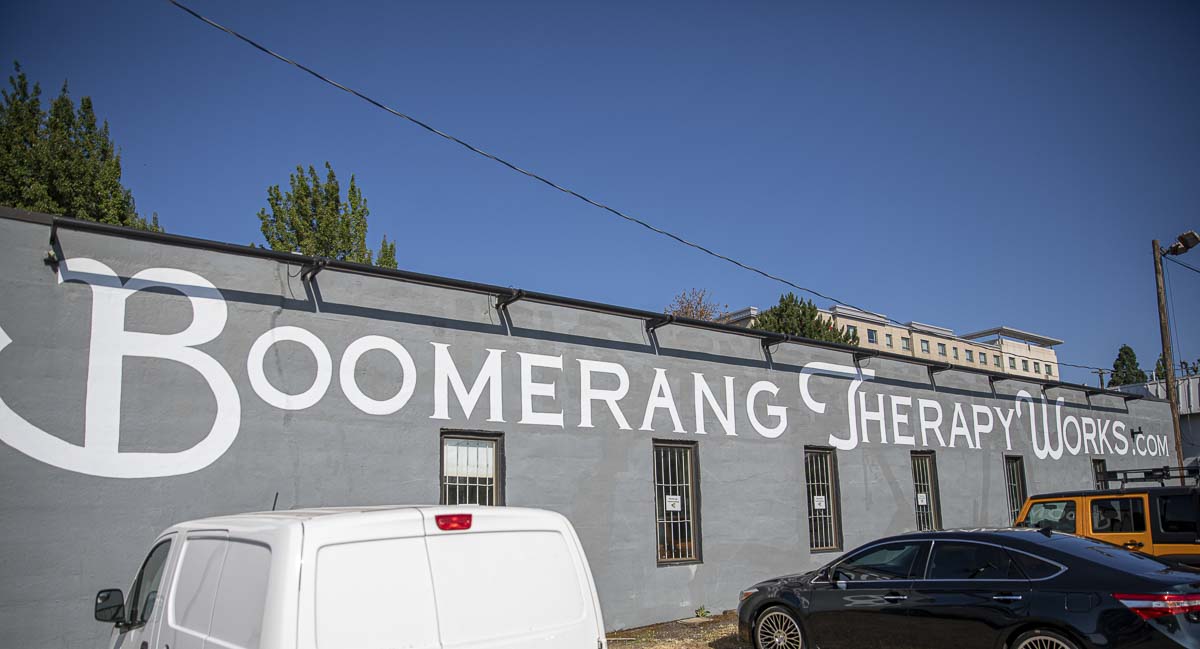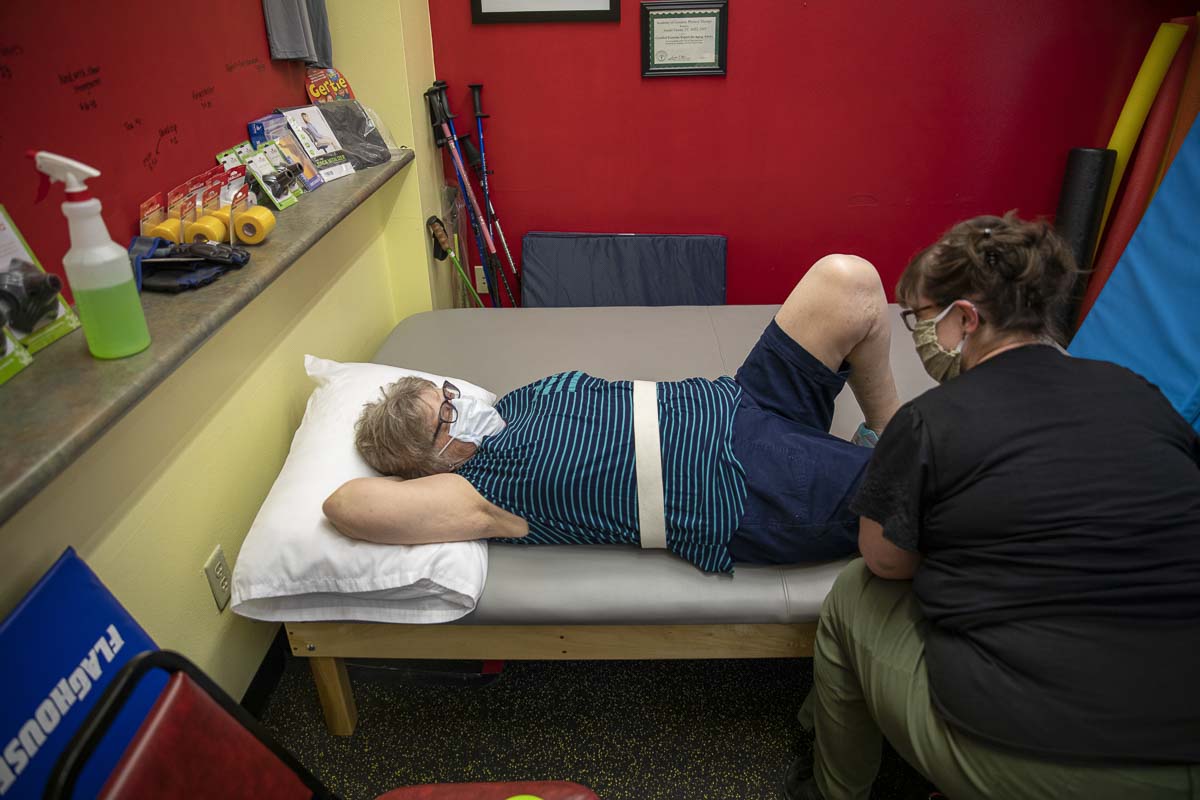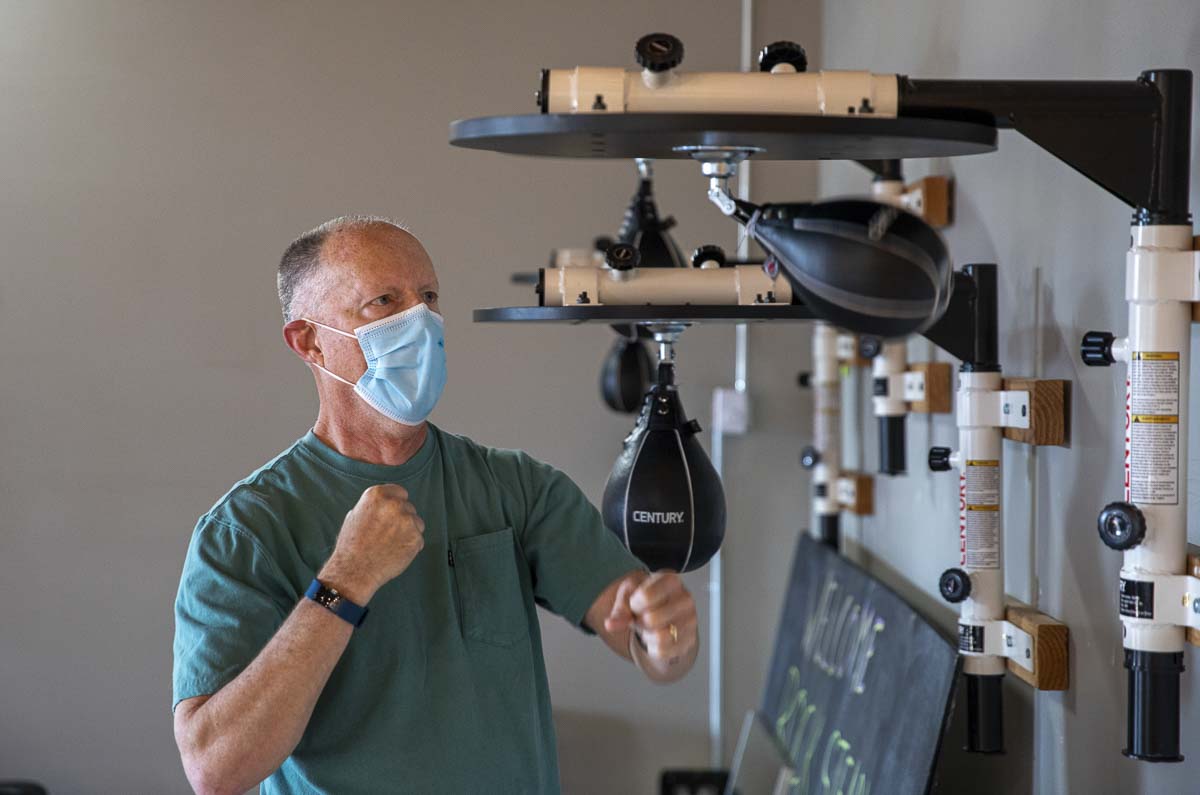Physical therapy and compassion go hand-in-hand for Vancouver clinic
VANCOUVER — If you’ve ever seen the large Boomerang Therapy Works mural taking the exit to SR-14 from I-5, or driven past it in downtown Vancouver, you may have wondered what it was. Well wonder no longer.
The over 7,000-square-foot facility is home to a physical therapy clinic with an identity all it’s own. It all began when founder and operator, JJ Flentke, decided she needed to change things up.

After working in such settings as Johns Hopkins and OHSU for some 28 years, Flentke felt more community oriented care was needed more than ever.
When her sister was 50 years old, she was diagnosed with Parkinson’s Disease. The diagnosis sent Flentke on a path to helping those with neurological disorders and physical problems with the combination of community and therapy.
“We are the Cheers of the physical therapy world,” Flentke said. “When people walk in the front door, we know their name, we say hello, I know their kids, I know their family. We are a small business. You do not need a referral to come for physical therapy. You just need to give us a call.”
Since 2017, Boomerang has operated out of the downtown location, and has consistently expanded its facilities and staff. With everything from safety harnesses, to state-of-the-art titling treadmills from Italy, to a game-show-style speed game, to a boxing and exercise studio, the clinic is much more than rehab.
Patients are often seniors with a diagnosis like Parkinson’s, but there are all types of people in the Boomerang community, Flentke said. Everyone from her 16-year-old son who plays tennis, to a woman with a knee replacement work together in an academic and compassionate setting.
“There’s a collaboration here, and how they share their expertise with one another,” said Ellen Crow, a joint therapy patient. “This place has something called dignity and compassion.”

One of the most popular activities held at Boomerang, specifically for those with Parkinson’s, is of all things, boxing. Well, at least boxing training. There is no real sparing or fighting, but the quick, repetitive and rapidly changing movements can help Parkinson’s patients sharpen their mind’s response time; slowing the disease.
“You’re just doing all the exercises to get in shape and balance and getting the mind working,” said Ellen’s husband, Richard Crow. “So somebody would share with you, they want you to do two jabs and one right hook or whatever, and when you have Parkinson’s it’s pretty hard to focus on doing what somebody asks you to do.”
Richard, in addition to his Parkinson’s, also has diabetes. Prior to coming to Boomerang, his blood sugar levels were so often out of sync that he felt drunk constantly. Since coming in and being grafted into a real community of friends with accountability, his life has been dramatically improved, he said.
Several physical therapists and specialists in other fields work on staff at Boomerang bringing a diverse field of knowledge to the table. Oftentimes, they will cross-pollinate treatments and care with their varied expertise, Flentke said.
“It’s a very welcoming, friendly environment where everybody’s really working to help each other get better,” said Physical Therapist (PT), Emily Kaemmerlen. “[With] the neurological piece, we really have a great understanding and focus on how to help people with those issues such as Parkinson’s and strokes; really help get them back to what they want to do. I don’t feel like a lot of other places have that sort of focus and understanding.”

Kaemmerlen explained that her favorite moments are very often when a patient realizes regained potential and ability.
“Seeing that light bulb moment where it’s like, ‘Oh, I can do this now,’ is just so exciting to me because it’s going to make their lives better and easier,” she said.
Flentke emphasized the importance of not allowing people to give up on themselves, as well. In her past work, the assumption was that in the case of something like a stroke, six months after, the patient’s final state would be set. That is simply not true, Flentke said. Boomerang has had patients who had a stroke three years ago have improvement after therapy.
Right now with the pandemic, Boomerang is still able to operate and is cleaning surfaces and circulating air with their massive fan all day long. On the health insurance side of things, Boomerang accepts all the major providers, and for Kaiser and the like they offer affordable rates, Flentke said.
“Your physician might encourage you to go to a clinic, but that might be a clinic that they own. That’s not necessarily bad, but you have a choice, you do not ever have to go to a specific clinic,” she said. “I welcome people to look at our website, check it out, see what we have to offer, see how we’re different. Make sure that they take control of their health. Because the bottom line is it’s your body.”




